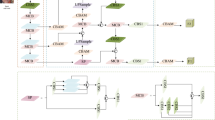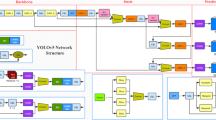Abstract
In recent years, traffic accidents caused by the distracted driving have been on the rise with the popularization of smart phones. How to correctly identify whether the driver is in a distracted driving state and to provide the necessary warnings for the driver to avoid potential safety risks has become one of the most concerned issues. In this paper, a distracted driving recognition method based on deep convolutional neural network is proposed for the driving image data captured by the in-vehicle camera. This method uses the PCA technology to whiten the driving image, which reduces the redundancy and correlation of the pixel matrix. At the same time, a multi-layer CNN network is constructed in the model and the key parameters of the input layer, convolution layer, pooling layer, fully connected layer and output layer are optimized as well. The results of experimental analysis show that the accuracy of the proposed method can reach 97.31%, which is higher than that of the existing machine learning algorithms. Therefore, the proposed method is effective in improving the accuracy of distracted driving recognition.







Similar content being viewed by others
References
Benuwa B, Zhan Y, Ghansah B, Wornyo D, Banaseka K (2016) A review of deep machine learning. Int J Eng Res Afr 24:124–136
Bi H, Sun J, Xu Z (2018) A graph-based semisupervised deep learning model for polsar image classification. IEEE Trans Geosci Remote Sens 57:1–17
Cheng W, Fu R, Yuan W, Liu Z, Zhang M, Liu T (2016) Driver attention distraction detection and hierarchical prewarning based on machine vision. J Comput AIDed Des Comput Graph 28(8):1287–1296
He K, Zhang X, Ren S, Sun J (2016) Deep residual learning for image recognition. In: 2016 IEEE conference on computer vision and pattern recognition (CVPR). IEEE Computer Society
Jin L, Niu Q, Hou H, Xian H, Wang Y, Shi D (2012) Driver cognitive distraction detection using driving performance measures. Discret Dyn Nat Soc 1–12
Krizhevsky A, Sutskever I, Hinton G (2012) ImageNet classification with deep convolutional neural networks. Commun ACM 60(6):84–90
Naomi T (2018) Traffic accidents are eighth leading cause of death globally, according to WHO. Cable News Network. https://edition.cnn.com/2018/12/07/health/who-road-safety-report-intl/index.html. Accessed 7 Dec 2018
Oktay O, Ferrante E, Kamnitsas K, Heinrich M, Bai W, Caballero J (2018) Anatomically constrained neural networks (acnns): application to cardiac image enhancement and segmentation. IEEE Trans Med Imaging 37(2):384–395
Orhan S, Bastanlar Y (2018) Training cnns with image patches for object localisation. Electron Lett 54(7):424–426
Rawat W, Wang Z (2017) Deep convolutional neural networks for image classification: a comprehensive review. Neural Comput 29(9):2352–2449
Robert J, Jacqueline A, Lloyd D, Ajmal M (2018) Predicting athlete ground reaction forces and moments from spatio-temporal driven cnn models. IEEE Trans Biomed Eng 66(3):689–694
Suzaki T, Kubo T, Hiraoka T, Nakagawa Y, Terada T, Yoshioka T, Ikeda K (2017) Steering behavior model of drivers on driving simulator through visual information. In: IEEE signal and information processing association summit and conference, pp 1–4
Simonyan K, Zisserman A (2014) Very deep convolutional networks for large-scale image recognition. In: ICLR 2015
Szegedy C, Liu W, Jia Y, Sermanet P, Reed S, Anguelov D, Erhan D, Vanhoucke V, Rabinovich A (2014) Going deeper with convolutions. In: CVPR 2015, pp 1–9
Tango F, Botta M (2013) Real-time detection system of driver distraction using machine learning. IEEE Trans Intell Transp Syst 14(2):894–905
Wang W, Zhao M, Wang J (2018) Effective android malware detection with a hybrid model based on deep autoencoder and convolutional neural network. J Ambient Intell Humaniz Comput 10(8):3035–3043
Wu S, Liu X, Sun H (2018) Influence of use of in-vehicle information device on driving behavior. China Saf Sci J 28(1):14–19
Xu L, Jiang C, Wang J, Yuan J, Ren Y (2014) Information security in big data: privacy and data mining. IEEE Access 2:1149–1176
Yan C, Zhang B, Coenen F (2016) Driving posture recognition by convolutional neural networks. IET Comput Vis 10(2):103–114
Yang J, Chang T, Hou E (2010) Driver distraction detection for vehicular monitoring. In: 36th annual conference on IEEE industrial electronics society, pp 108–113
Yang J, Lim S (2016) Driver state estimation by convolutional neural network using multimodal sensor data. Electron Lett 52(17):1495–1497
Yang X, Chen L, Zhang Z, Wang H, Na X, Cao D, Velenis E, Wang F (2018) Identification and analysis of driver postures for in-vehicle driving activities and secondary tasks recognition. IEEE Trans Comput Soc Syst 5:95–108
Yolcu G, Oztel I, Kazan S, Oz C, Bunyak F (2019) Deep learning-based face analysis system for monitoring customer interest. J Ambient Intell Humaniz Comput. https://doi.org/10.1007/s12652-019-01310-5
Zhang H, Qian D, Shao C, Qian Z, Jian M (2018) Identification of driver distraction states with optimized support vector machine method. J Transp Syst Eng Inf Technol 18:127–132
Funding
This work is supported in part by the National Nature Science Foundation of China (Grant No. 61841701), the GuangDong Natural Science Foundation (Grant No. 2019B010137002) and the Research Project of Fuzhou Polytechnic (Grant No. FZYKJJJB201901).
Author information
Authors and Affiliations
Corresponding author
Additional information
Publisher's Note
Springer Nature remains neutral with regard to jurisdictional claims in published maps and institutional affiliations.
Rights and permissions
About this article
Cite this article
Rao, X., Lin, F., Chen, Z. et al. Distracted driving recognition method based on deep convolutional neural network. J Ambient Intell Human Comput 12, 193–200 (2021). https://doi.org/10.1007/s12652-019-01597-4
Received:
Accepted:
Published:
Issue Date:
DOI: https://doi.org/10.1007/s12652-019-01597-4




